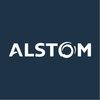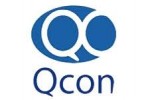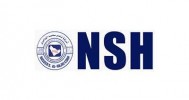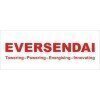Filter interviews by
Kamlesh Kumar Singh Engineers Safety Officer Interview Questions and Answers for Experienced
Kamlesh Kumar Singh Engineers Safety Officer Interview Experiences for Experienced
1 interview found
Interview Questionnaire
3 Questions
- Q1. What is safety ??
- Ans.
Safety refers to the condition of being protected from harm, injury, or danger.
Safety involves identifying and assessing potential hazards and taking measures to prevent accidents or injuries.
It is important to follow safety protocols and procedures in order to minimize risks.
Examples of safety measures include wearing personal protective equipment, using safety equipment such as guardrails or safety harnesses, and imp...
- Q2. What is PPE ??
- Ans.
PPE stands for Personal Protective Equipment.
PPE is equipment worn to minimize exposure to hazards that may cause serious workplace injuries or illnesses.
Examples of PPE include gloves, safety glasses, hard hats, respirators, and earplugs.
Employers are responsible for providing PPE to their employees and ensuring that it is used properly.
Employees must be trained on how to properly use and maintain their PPE.
PPE should...
- Q3. How many type off fire ??
- Ans.
There are 5 types of fire: Class A, Class B, Class C, Class D, and Class K.
Class A fires involve ordinary combustibles like wood, paper, or cloth.
Class B fires involve flammable liquids or gases like gasoline or propane.
Class C fires involve electrical equipment like appliances or wiring.
Class D fires involve combustible metals like magnesium or titanium.
Class K fires involve cooking oils and fats.
Top trending discussions






Interview questions from similar companies

I applied via LinkedIn and was interviewed in Mar 2024. There was 1 interview round.
(2 Questions)
- Q1. What are Hazards of Work at Height ?
- Ans.
Hazards of work at height include falls, falling objects, unstable surfaces, and weather conditions.
Falls from height can result in serious injuries or fatalities
Objects falling from height can cause harm to workers below
Unstable surfaces such as ladders or scaffolding can lead to slips or falls
Weather conditions like wind or rain can increase the risk of accidents
Improper use of safety equipment can also contribute to...
- Q2. What is Hazard Control Hierarchy ?
- Ans.
Hazard Control Hierarchy is a system used to prioritize and implement control measures to reduce or eliminate workplace hazards.
Hierarchy of controls ranks control measures from most effective to least effective: Elimination, Substitution, Engineering Controls, Administrative Controls, Personal Protective Equipment (PPE)
The goal is to eliminate or reduce hazards at the source rather than relying on PPE
Example: Instead ...
Interview Preparation Tips

Safety Officer Interview Questions & Answers
Megha Engineering & Infrastructuresposted on 19 Jun 2021
I applied via Walk-in and was interviewed in Dec 2020. There was 1 interview round.
Interview Questionnaire
1 Question
- Q1. 1 Tell me about your self 2 Project work 3 some basic topics related to safety 4 C.V. basic topics
Interview Preparation Tips

Safety Officer Interview Questions & Answers
Shapoorji Pallonji Groupposted on 2 Nov 2021
I applied via Referral and was interviewed before Nov 2020. There was 1 interview round.
Interview Questionnaire
3 Questions
- Q1. About my Self
- Q2. Height work safety & Control measures
- Q3. Engineering control, legal control , administrative control, ppe
Interview Preparation Tips

Safety Officer Interview Questions & Answers
Shapoorji Pallonji Groupposted on 2 Nov 2021
I applied via Referral and was interviewed before Nov 2020. There was 1 interview round.
Interview Questionnaire
2 Questions
- Q1. Height work safety &Control measures
- Q2. Administrative control, Engineering control, legal control
Interview Preparation Tips

Safety Officer Interview Questions & Answers
Megha Engineering & Infrastructuresposted on 23 Aug 2023
I applied via Naukri.com

(5 Questions)
- Q1. How many type of hazard
- Ans.
There are three main types of hazards: physical, chemical, and biological.
Physical hazards include slips, trips, falls, noise, vibration, and extreme temperatures.
Chemical hazards involve exposure to harmful substances like gases, liquids, and dusts.
Biological hazards come from exposure to viruses, bacteria, fungi, and parasites.
- Q2. What is confined space
- Ans.
Confined space is an area that is not designed for continuous occupancy, has limited entry and exit points, and may have poor ventilation.
Confined spaces are typically small and enclosed, making it difficult to enter and exit.
These spaces may contain hazardous substances or conditions that can be harmful to workers.
Examples of confined spaces include storage tanks, silos, tunnels, and sewers.
- Q3. What is hazard of work at height
- Ans.
Working at height poses risks of falls, falling objects, and structural collapses.
Falls from height can result in serious injuries or fatalities
Objects dropped from height can cause harm to workers below
Structural collapses can occur due to improper installation or maintenance
Safety measures such as guardrails, harnesses, and regular inspections are crucial to prevent accidents
- Q4. What is safety in construction
- Ans.
Safety in construction refers to the measures taken to prevent accidents, injuries, and fatalities on construction sites.
Ensuring proper training and supervision of workers
Implementing safety protocols and procedures
Providing personal protective equipment (PPE)
Regular inspections of equipment and work areas
Emergency preparedness and response plans
Examples: Fall protection systems, scaffolding safety measures
- Q5. How many type of fire
- Ans.
There are five main classes of fire: Class A, Class B, Class C, Class D, and Class K.
Class A fires involve ordinary combustible materials such as wood, paper, and cloth.
Class B fires involve flammable liquids like gasoline, oil, and grease.
Class C fires involve energized electrical equipment.
Class D fires involve combustible metals like magnesium, titanium, and sodium.
Class K fires involve cooking oils and fats commonl...
Interview Preparation Tips

Safety Officer Interview Questions & Answers
Shapoorji Pallonji Groupposted on 19 Oct 2023

(1 Question)
- Q1. Salary, location jonlb
(1 Question)
- Q1. Work permit, checklist, hira , JSA

Safety Officer Interview Questions & Answers
Shapoorji Pallonji Groupposted on 14 Jun 2025
I appeared for an interview before Jun 2024, where I was asked the following questions.
- Q1. What knowledge required to become a Safety Officer?
- Ans.
A Safety Officer must possess knowledge in regulations, risk assessment, and emergency response to ensure workplace safety.
Understanding of OSHA regulations and compliance requirements.
Knowledge of hazard identification and risk assessment techniques.
Familiarity with safety training programs and employee education.
Ability to conduct safety audits and inspections.
Experience with emergency response planning and drills.
- Q2. How can you effectively manage and treat your workforce?
- Ans.
Effective workforce management involves proactive safety measures, communication, and continuous training to ensure a safe work environment.
Conduct regular safety training sessions to keep employees informed about safety protocols and emergency procedures.
Implement a reporting system for near misses and hazards, encouraging employees to voice concerns without fear of reprisal.
Perform regular safety audits and inspectio...
- Q3. What is control measure.
- Ans.
Control measures are strategies implemented to minimize risks and ensure safety in various environments.
Control measures can be administrative, engineering, or personal protective equipment (PPE).
Example: Installing guardrails on scaffolding to prevent falls.
Example: Conducting regular safety training sessions for employees.
Example: Using PPE like helmets and gloves to protect workers from hazards.
Interview Preparation Tips

Safety Officer Interview Questions & Answers
Shapoorji Pallonji Groupposted on 26 Dec 2021
I applied via Walk-in and was interviewed in Nov 2021. There was 1 interview round.
Interview Questionnaire
21 Questions
- Q1. HIRA full from
- Ans.
HIRA stands for Hazard Identification and Risk Assessment.
HIRA is a systematic process of identifying potential hazards and analyzing the associated risks.
It involves identifying the hazards, assessing the risks, and implementing control measures to mitigate the risks.
HIRA is an important tool for safety officers to ensure the safety of employees and the workplace.
Examples of hazards that can be identified through HIRA...
- Q2. ISO stander
- Q3. IBOSh full from
- Ans.
I'm sorry, but the question is not clear and seems to be incomplete.
Please provide more context or rephrase the question.
Without proper information, I cannot provide a relevant answer.
Kindly clarify the question so that I can assist you better.
- Q4. Safety belt lanyard length
- Q5. NEbosh full from
- Ans.
NEBOSH stands for the National Examination Board in Occupational Safety and Health, focusing on health and safety qualifications.
NEBOSH was established in 1979 to provide health and safety qualifications.
It offers various certifications, including the NEBOSH National General Certificate.
The qualifications are recognized globally, enhancing career prospects in safety roles.
NEBOSH courses cover topics like risk assessmen...
- Q6. Audit report
- Q7. Job related
- Q8. Crane load capacity
- Q9. LMR full from
- Ans.
LMR full from refers to a situation where the Land Mobile Radio system is at maximum capacity.
LMR full from means that the Land Mobile Radio system is unable to accommodate any more users or communications.
This can occur when all available channels or frequencies are in use.
It may result in communication delays or the inability to establish new connections.
LMR full from can impact the effectiveness of emergency respons...
- Q10. Work to permit
- Q11. EHS meeting
- Q12. Road safety
- Q13. Electrical safety
- Q14. Fire hazard
- Q15. What is safety
- Ans.
Safety is the state of being protected from harm, danger, or injury.
Safety involves identifying and assessing potential hazards
It requires implementing measures to prevent or mitigate those hazards
It involves training and educating individuals on safe practices
Safety is a continuous process that requires ongoing evaluation and improvement
Examples of safety measures include wearing personal protective equipment, followi...
- Q16. Shut down work
- Ans.
Shutting down work is a crucial safety measure to prevent accidents and ensure the well-being of workers.
Shutting down work may be necessary in case of an imminent danger or hazard that cannot be immediately controlled.
It is important to have clear protocols and procedures in place for shutting down work in different scenarios.
Examples of situations that may require work shutdown include gas leaks, chemical spills, str...
- Q17. CSR activities
- Q18. Foundation work relate
- Q19. Severity rate
- Q20. What is accident
- Ans.
An accident is an unexpected and unintentional event that causes harm or damage.
Accidents can happen in any setting, including workplaces, homes, and on the road.
They can result in physical injuries, property damage, or both.
Accidents can be caused by human error, equipment failure, or environmental factors.
Examples of accidents include slips and falls, car crashes, and machinery malfunctions.
- Q21. What is incident
Interview Preparation Tips

Safety Officer Interview Questions & Answers
Shapoorji Pallonji Groupposted on 30 May 2022
I applied via Naukri.com and was interviewed in Apr 2022. There were 4 interview rounds.

How to implement workers to do work in a Safety process.
How to minimize and control hazard.
(2 Questions)
- Q1. Salary discussion and about previous work.
- Q2. How much expection about salary.
Interview Preparation Tips
- About safety hazard.
Kamlesh Kumar Singh Engineers Interview FAQs
Tell us how to improve this page.
Kamlesh Kumar Singh Engineers Interviews By Designations
Interview Questions for Popular Designations
Safety Officer Interview Questions from Similar Companies
Kamlesh Kumar Singh Engineers Safety Officer Reviews and Ratings
based on 12 reviews
Rating in categories
|
Piping Engineer
33
salaries
| ₹2.8 L/yr - ₹9 L/yr |
|
QA QC Engineer
28
salaries
| ₹2.2 L/yr - ₹6 L/yr |
|
Safety Officer
23
salaries
| ₹1.8 L/yr - ₹4.3 L/yr |
|
Planning Engineer
15
salaries
| ₹2.4 L/yr - ₹5 L/yr |
|
Mechanical Engineer
12
salaries
| ₹2.5 L/yr - ₹6 L/yr |

Megha Engineering & Infrastructures

Shapoorji Pallonji Group

Alstom Transportation

Tata Technologies
- Home >
- Interviews >
- Kamlesh Kumar Singh Engineers Interview Questions >
- Kamlesh Kumar Singh Engineers Interview Questions for Experienced















